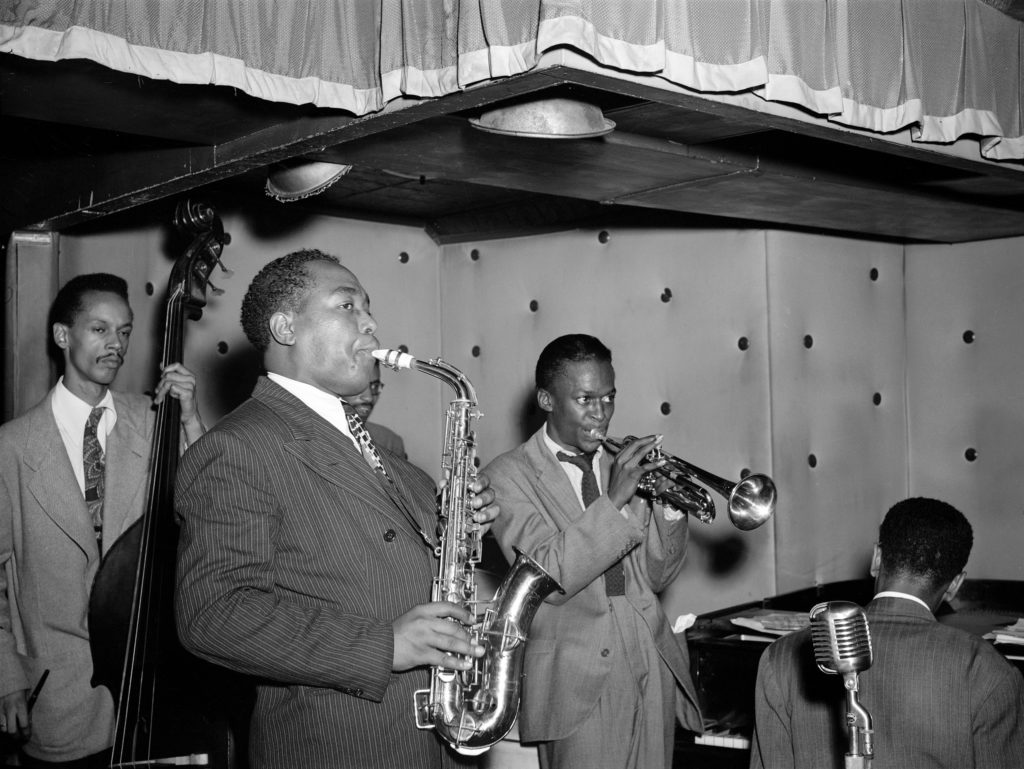
The Way He Lived and Played
In the parlance of the sports world, Charlie Parker “left it all on the field.” The unstoppable, overwhelming intensity with which he played the saxophone was mirrored in the way he lived his life as well. When he died in the New York City apartment of Baroness Panonnica de Koenigswarter at the Hotel Apartments Stanhope (at Fifth Avenue and 81st Street) on March 12, 1955, he was just 34 years old. Based on Parker’s appearance at the time of his death, the attending physician, Dr. Robert Freymann, estimated his age as being between 55 and 60; the coroner who conducted his autopsy put an age of 53 on his death certificate. Parker’s immediate cause of death was unclear, because after a lifetime (albeit a short lifetime) of living at the very edge, his body had simply given out. His stomach wall was perforated by a peptic ulcer; he was suffering from lobar pneumonia; his cirrhotic liver had stopped functioning; and he suffered a massive heart attack, pretty much all at once.

It has been said that Charlie Parker wasn’t so much as dead as he was used up.
According to the founder of Dial Records and Parker biographer Ross Russell (Bird Lives! The High Life and Hard Times of Charlie Parker, Charterhouse, 1973), Parker was:
“A man with a hostile yet ingratiating personality. A man who was constantly late, strung out on heroin, booze, and pills, addicted to frequent and often incredible excesses of food and sex – double dinners, hamburger eating contests, bacchanals with two and sometimes even three willing, experienced women locked in a hotel suite for around-the-clock orgies of dope and carnal sport. Every experience was evaluated on a simplistic scale of values: either it was a ‘drag’ or a ‘ball.’ Charlie Parker literally ‘balled’ his way through life, leaving behind a hopelessly confused set of impressions on those who knew him, and a body of music that was the result of a deep, lasting commitment to the culture he loved and understood, and an uncompromising self-discipline, the only one to which he submitted in his lifetime.”
Jazz and Bebop scholar Scott DeVeaux calls Parker’s life “a painful mixture of steely determination and sordid excess.” According to the American writer, literary critic, and scholar Ralph Ellison (1914-1994), Parker played out his life in public:
“like a man dismembering himself with a dull razor on a spotlighted stage.”

Miles Davis, who broke in with Charlie Parker and knew him as well as anyone could have known him, did not sugar coat his memory of Parker:
“Bird was great and a genius musician, man, but he was also one of the slimiest and greediest motherfuckers who ever lived in this world.”
Whoa.
This is unduly harsh, as many of the people who knew Parker testified to his kindness and affability. However, as someone who shared the bandstand with Charlie Parker and was paid by Parker, Davis would have known first-hand about Parker’s monetary profligacy, which was to a great extent the result of his drug addiction. In fact, the “slime” to which Miles Davis refers was almost certainly the product of Charlie Parker’s heroin addiction (an addiction Charlie Parker was generous enough to pass on to Miles Davis while Davis played in his band!).
Parker got involved in drugs and alcohol as a teenager, and for the remainder of his short life he never drifted far from the demimonde of pushers and addicts and from drug and alcohol induced psychosis. His manic, self-destructive behavior became part of jazz folklore just as Jimmy Hendrix, Jim Morrison, and Janis Joplin’s overdose deaths became part of rock ‘n’ roll folklore.
Given the intensity with which he lived his life and his all-encompassing need for constant stimulation, Parker’s substance abuse would seem (sadly) to go hand-in-hand with his extraordinary music, music of otherworldly intensity and originality.…
Continue reading, and see all the prescriptions, only on Patreon!
Become a Patron!